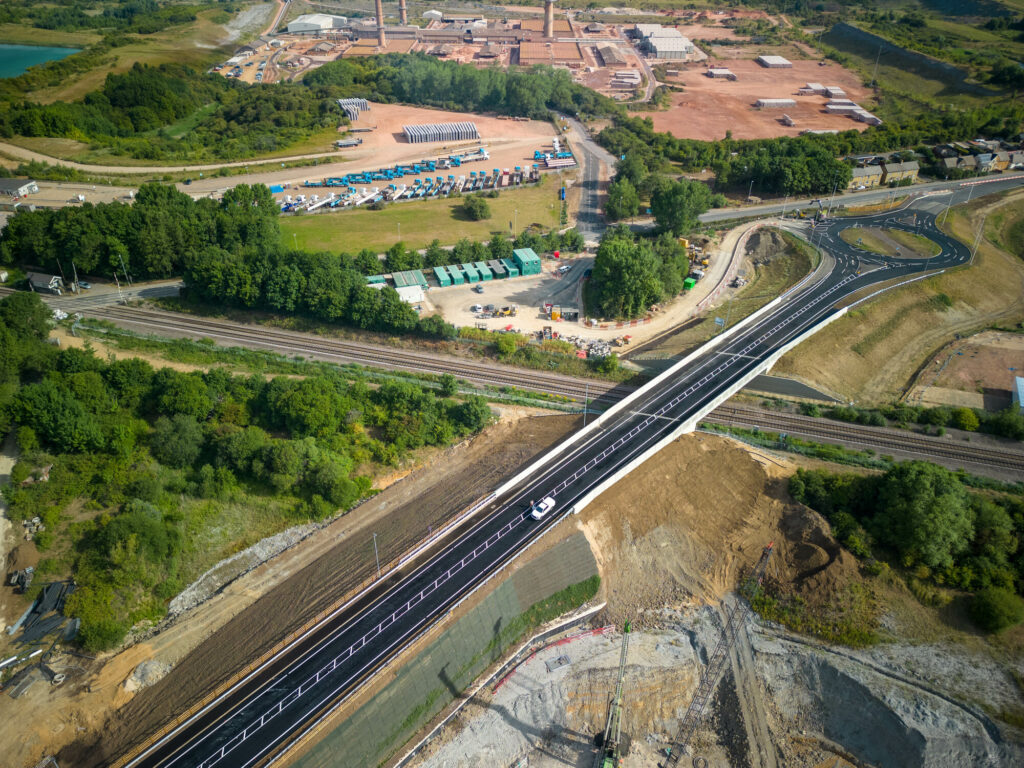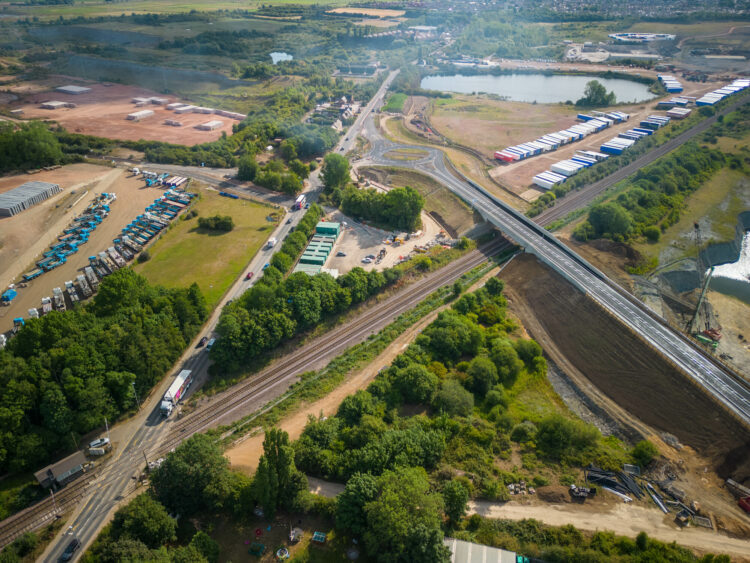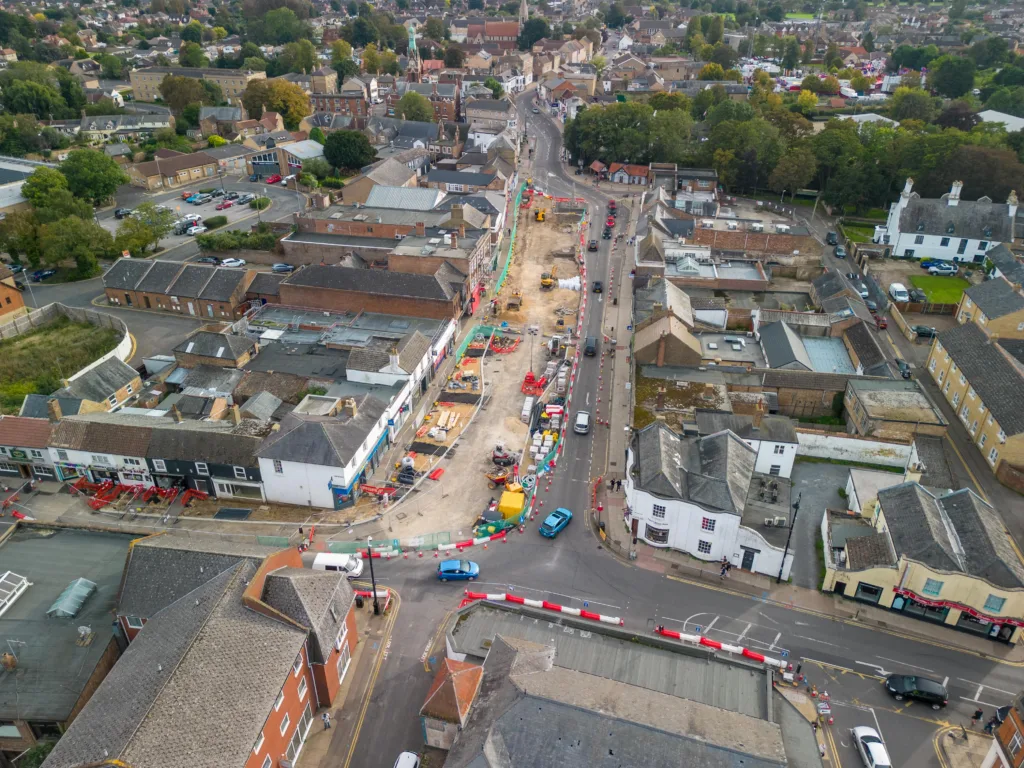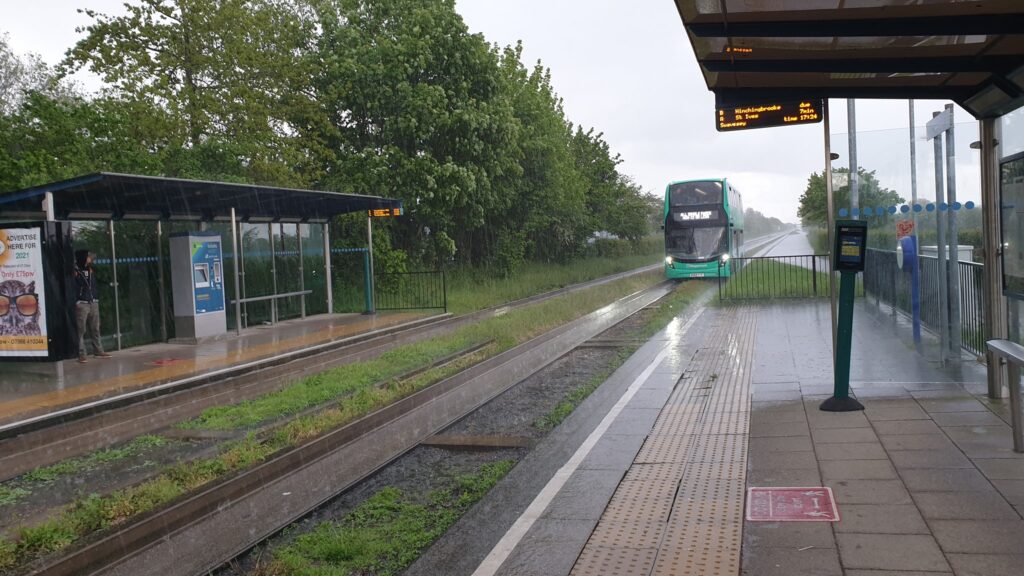Traffic lights on the troubled £32m King’s Dyke Crossing at Whittlesey will remain until September to allow for remedial works to be carried out. Cambridgeshire County Council says Jones Bros Civil Engineering – who built it – hope to begin repair works in May and have the work completed by September.
It means the bridge – known as the Ralph Butcher Causeway – will have been reduced to single file traffic for 15 months by the time it re-opens fully.
The bridge was due to have been built by Keir, but the company walked away from the job in a price dispute with Cambridgeshire County Council; the contract was eventually awarded to Jones Bros and opened in 2022.
But after cracks appeared, the county council took precautionary measures and on June 13 last year reduced it to single file for Jones Bros “to carry out some tests and further monitoring to identify the cause of the cracking.
“Jones Bros designers are considering the results of the testing and monitoring to help inform the design of remedial works”.

It has taken until now for Jones Bros to confirm, what the county council said last June, was a “date for remedial works to be undertaken because of the complexities in design, which need to be carefully considered in determining the solution.
“We continue to work closely with the contractor to understand why the cracks have appeared, which is essential to inform the design.”
On Friday, a county council spokesperson said: “The emergency lane closure on Ralph Butcher Causeway, due to cracking in the road, remains in place”.
In a statement the council said investigative work, including all the tests, have been completed.
“Jones Bros are considering a number of design options to finalise the preferred option for the required remedial work,” the statement added.
Whittlesey traffic issues will go from ‘serious to critical’ warns council leader
“We plan to start work on site in May, subject to the necessary approvals, and it is anticipated the remedial work would be completed in September.
“We will be able to share more details on the programme once we have the full details from our contractor, Jones Bros.”
The council statement concluded: “We’d like to reassure people, whichever option is chosen, it is currently anticipated that the work can be carried out and completed under a lane closure.
“A full road closure will not be required. We apologise for the inconvenience.”
Whittlesey county councillor Chris Boden has campaigned for more detailed information about the causes of the cracks and the potential solutions.
Fresh problems hit flagship £32m A605 King’s Dyke crossing at Whittlesey
His most recent update, 10 days ago, confirmed that “the only closure required, more than six months after the work has been done and more than six months after the temporary traffic lights have been taken away, would be a fairly quick closure to resurface the affected part of the road above the embankment”.
Cllr Boden said he had been briefed on some of the issues and that “vertical movement of the embankment is completely expected and is, I’m told, not a worry.
“It’s the horizontal movement which has caused all the concern. A logical speculation may be that it’s due to greater than planned water content in the embankment’s subsurface material, but that is at this time speculation.
“What honestly surprises me is that, regardless of identification of the cause(s) of the problem, quite a bit of thought, and checking, of alternative types of solution has already taken place, with a preferred option provisionally coming to the fore”.
He added: “The options which are currently being discounted (subject to the final test results being analysed) are (1) to ‘build out’ the embankment so that substantial additional material is deposited so that a gentler slope of material is created to provide additional support to the existing embankment and (2) to control and absorb additional weight on top of the embankment.
“The solution which is *provisionally* the front runner is ‘soil nailing’ with a ‘shotcrete’ finish. My understanding is that is that this solution supports the weight of the embankment using specially designed 6m and 20m nails which are driven at an angle into the embankment, supporting a load spreading mesh-like substance which has concrete fired into it.
“This is my best understanding of the current front-runner remediation option, but it is very much subject to the full results and analysis of the soil testing.”
Cllr Boden said: “For those far more technically adept than I am, please forgive my best understanding approximate description of the process.”
He felt that if this is the option used to provide remediation, then the advantages are the bridge would stay open whilst repair work is carried out and its quicker than building out new embankments to provide additional horizontal support for the existing embankments.
And, he said, there would be “no long process of planning permission needed if soil nailing, and shotcrete firing is the solution”.
Cllr Boden said he had also been successful in bringing back an officers/members working group on the bridge “to consider what’s happening there and how the issues there will be solved”. The first meeting of the reconstituted working group has now taken place “with plenty of information provided”.

























